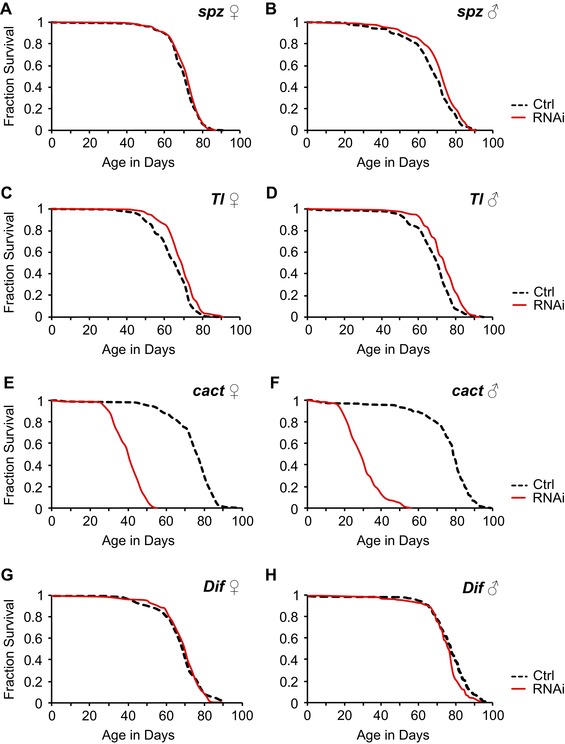Figure 6.

Decreased Toll signaling promotes longevity while hyperactivation shortens lifespan. (A–H) Adult survival upon ubiquitous, adult‐specific transgenic RNAi directed against four canonical components of the Toll signaling pathway: the Toll ligand spätzle (spz) (A, B), the receptor Toll (Tl) (C, D), the Toll inhibitor cactus (cact) (E, F), and the NFκB transcription factor Dorsal‐related immunity factor (Dif) (G, H). (A, C, E, G) show data for female flies and (B, D, F, H) represent data for male flies. Silencing the Tl receptor (C, D) – but not the spz ligand (A, B)–extends lifespan, while silencing the antagonist cact dramatically shortens lifespan (E, F); silencing Dif has opposite effects on female and male lifespan (G, H). For details of statistical analysis using mixed‐effects Cox (proportional hazards) regression see Table S5.
Expression of the different UAS‐RNAi responder constructs was driven with a mifepristone‐inducible daughterless(da)‐GeneSwitch(GS)‐GAL4 driver. Solid red curves: 200 μg/mL (466 μM) mifepristone (RNAi); dashed curves: 0 μg/mL mifepristone (control). For experimental details see Supplementary methods.
